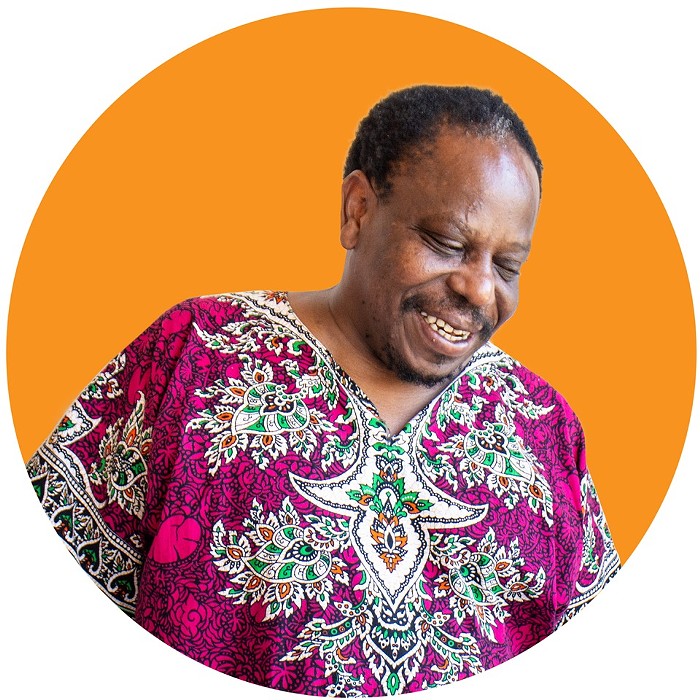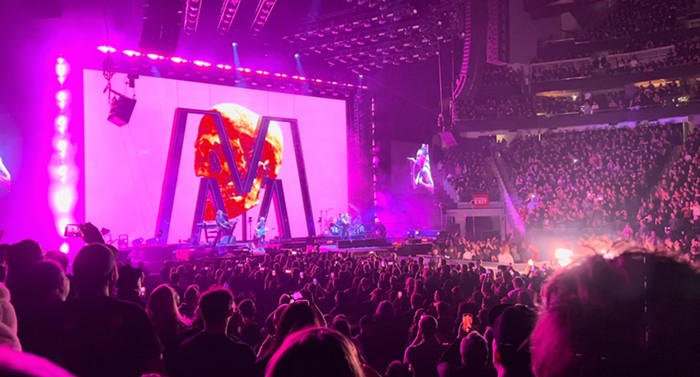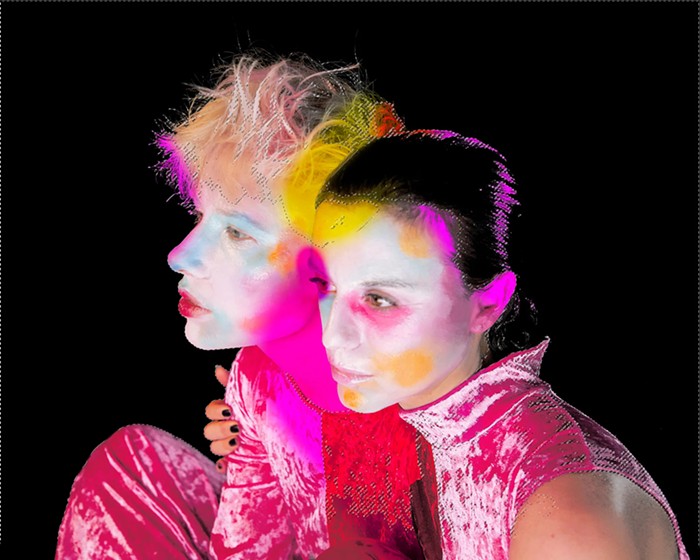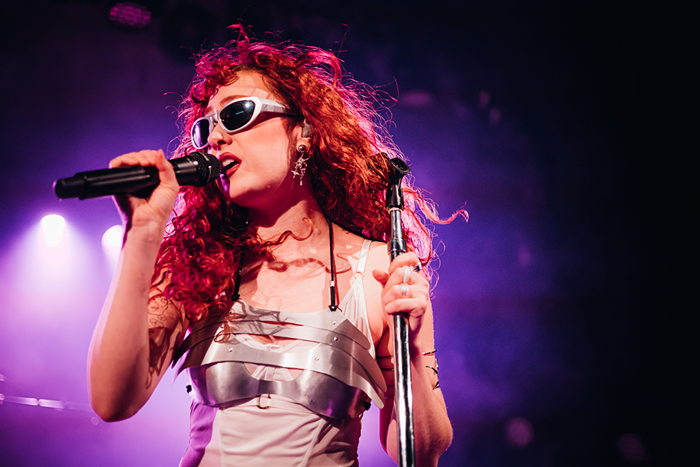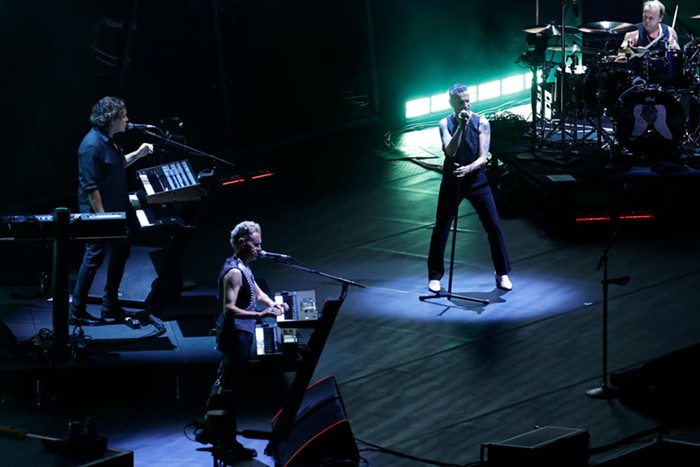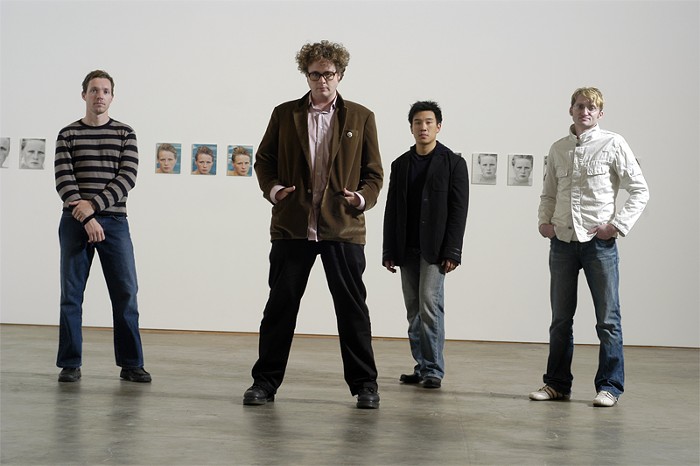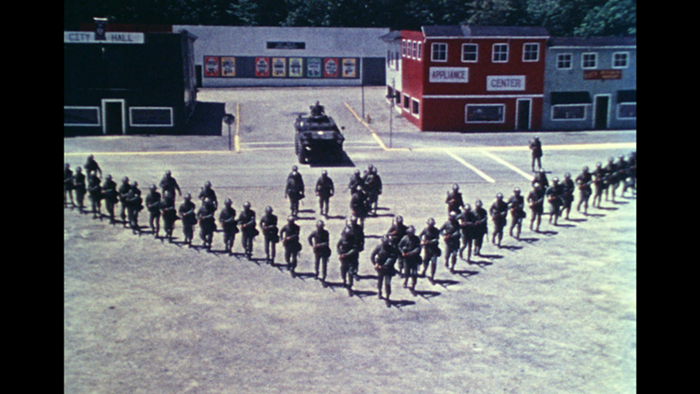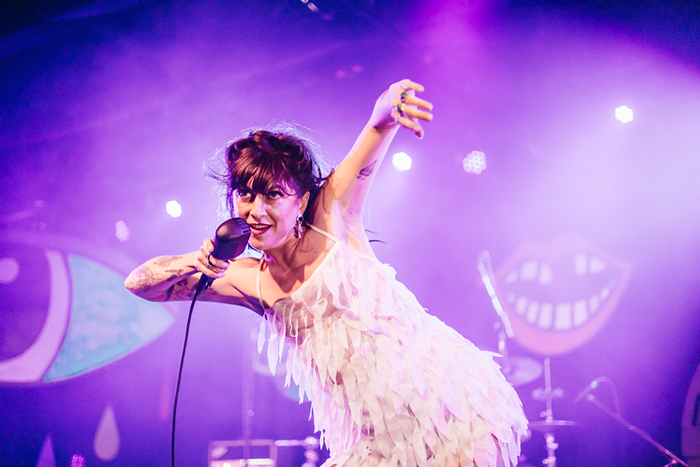Where to begin with Antony Hegarty? Maybe with his band, Antony and the Johnsons, who have so far cut three albums and four EPs, have Manhattan as their home and place of initiation, and have established an international following that is enchanted by the strange and theatrical beauty of Antony's voice, poetry, and music—which can roughly be broken down into these elements: '60s soul, '70s folk-rock, and '80s pop. As for Antony himself, he began his life some 30 or so years ago in the UK, spent a part of his childhood in California, and finally settled in New York in the '90s. Here he attended NYU and participated in an avant-garde theater and music scene that was then haunted by the voices and visions of singers and actors who had lost their lives to the "gay plague." In this sad climate, the aftermath of the '80s, Antony shaped his band, his sound, and the central theme of his tunes, poetry, and theater of the self. In the early 2000s, he participated in a wonderful disco record, Hercules and Love Affair, which was released last year; this year, he released a new album, The Crying Light. The present decade has seen the rise of his name to indie fame and critical acclaim.
Now that we have established Antony's beginnings, let's turn to the essence of his art and mode. That essence is being between things—between female and male, between heaven and earth, between life and death. His voice, sexuality, lyrics, and music are neither this, feminine, nor that, masculine, but a third that issues from the space in between these stable sexual codes. But there is more. Antony does not so much challenge or disrupt the certainty of being one or the other, but presents the third on its own terms. Antony is not a rebel in the way that Boy George—a singer he is often compared with (and has duetted with)—was a rebel. Antony is not shocking, nor here to cause trouble by exposing masculinity and femininity as mere social fabrications. That is not his game or goal. Instead of challenging stable positions, Antony's androgyny is a kind of opening of the heart to a problem that confronts us all, the problem of existence itself.
''Oh, I'm scared of that middle place between light and nowhere,'' Antony sings on "Hope There's Someone," the opening track of his second album, I Am a Bird Now. "I'm only a child, born upon a grave," he sings on the fourth track of his third album, The Crying Light. Always this insistence on the inseparability of life and death. With Antony, the two are one: One is born in a grave; one is dying to be alive; one is night and day, light and dark; one is "dust and water, water and dust." Antony's music is far more existential than sexual, and what it challenges is our habit to place death on one side and life on the other. Death is absolute and life is absolute, and there is nothing between them, no third term or moment. A person is either alive or not. Thousands of years ago, the Eleatics argued that nothing comes from nothing, and something from something—something cannot come from nothing. But when Antony ghostily sings lines like "dust and water, water and dust," he is insisting on the impossible: Life is death because death is life. In other words, no life means no death.
It is not surprising that the cover of The Crying Light is a terrifying image of the Japanese Butoh dancer Kazuo Ohno—terrifying because Ohno recalls those ghosts in Japanese folk stories that appear to be alive but are in fact dead, and only after having sex with them several times does the enchantment break and the hero realize that he has been fucking a pile of putrid bones. The very slowness of Butoh dancing (which resembles decaying architecture as much as it does dancing) expresses the ultimate motionlessness of a corpse. Butoh is between the mobility of life and immobility of lifelessness; it brings to the surface of the body the grave that is grounded within us, the death that was born when we were born and that lives for as long as we live. (Ironically, Ohno, now 102 years old, approaches death immobilized, confined to a wheelchair.)
Another example of the death/life unity can found on the cover of I Am a Bird Now, which has an image of transgender Factory star Candy Darling near the end of her life. The picture was taken by Peter Hujar, and this is what Antony had to say about the photographer in the 2005 New York magazine article "Antony Finds His Voice": "[Hujar] took portraits of New York underground artists, painters, photographers, writers, drag queens... He was a peer of Mapplethorpe's, but where all of Mapplethorpe's pictures were obsessed with the perfection of the surface, Hujar's were obsessed with the essence. In a way, he says everything I would like to say in a song. His pictures show someone who is suspended between light and darkness."
Antony's melancholy music and theatrical voice also exist between two other stable poles: laughter and crying. Although he rarely sings about laughing and constantly goes on and on about crying ("I cry for daylight," "When my tears have turned to snow," etc.), some of his tunes completely and comically collapse under the weight of his wrought writing and phrasing—"Kiss My Name," for example. Other times, the same writing and phrasing move you to tears—the soulful "Aeon," for example. Most often, though, the listener is neither laughing nor crying but both—a delicate emotional state perfectly suited to Antony's explorations of the correspondences of life and death. ![]()

